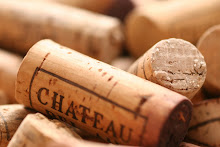
In an email to allocation members, Scarecrow announced a new wine called M. Ètain for 2008. Is this a luxury cuvee, or a second wine? Probably the latter. The email describes:
“The portion of juice that wasn’t included in the final Scarecrow blend was so undeniably superb that we were inspired to bottle it...M. Étain 2008, a stunning Cabernet Sauvignon which charmingly displays a perfect balance between power and elegance.”
The email goes on to say that M. Ètain won’t necessarily be offered every year. To me, it sounds like a second wine, with limited availability.
Should you buy it?
Scarecrow is coming from a big success with its 2007 offering, but consider that 2008 was a difficult year for Napa. The 2008 Scarecrow has a Parker score of (92-94), the lowest of any Scarecrow, and the 2008 M. Ètain is still unrated -and unpriced. This year’s 2008 M. Ètain offering might be fun for collectors and consumers, but it is unlikely to be worthwhile for speculators. I expect the best juice went into the 2008 Scarecrow.





